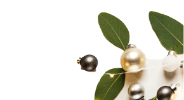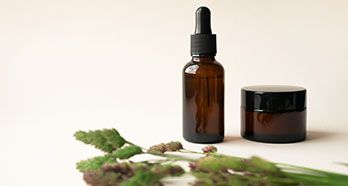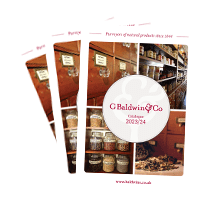Infusions v Decoctions - What's the difference?
You hear the phrases ‘infusions’ and ‘ decortication’ a lot when you are reading about herbal teas, yet it is rare that any of them actually give you an explanation of what they are.
We are just led to believe they are simply a different type of herbal tea.
But this is not strictly true.
For instance, I did a little looking around and found that infusions and decoctions are simply two different methods use to prepare herbal tea.
What is infusion?
You’re probably most familiar with this type of tea as infusions occur when you put a tea bag or tea ball into a cup of hot water to steep for a couple of minutes before drinking.
By allowing the leaves, flowers, soft stems, citrus peeling etc to steep in the water this helps to extract vitamins and volatile ingredients from the leaves which can be used to support you nutritionally and medicinally.
Common examples of infusion include: green tea, black tea, peppermint tea, nettle leaf tea and chamomile tea.
Now it is important to note that not all herbs are safe to be used to create an infusion. Similarly, there are some herbs which can’t provide you with the health benefits you are looking for when taken in this form. So if you are interested in creating your own infusion from scratch, then you need to be careful.
Herbs which are suitable for infusions include: nettle leaf, raspberry leaf, chickweed, oat straw, red clover blossoms and leaf, peppermint and cleavers.
Interesting fact: all of the herbs I have just listed above are very nutrient dense and can be used daily. That is why they should be steeped for at least 6-8 hours as this helps them to become ‘liquid food for your cells’.
How is a decoction different?
As I mentioned before decoctions are different in the way they are prepared as a decoction is used to extract mineral salts and bitter principles from plants such as roots, bark, seeds, rhizomes and woods.
Now to do this, these hard materials have to be boiled for at least 10-15 minutes before being allowed to steep for a few hours. The tea is then boiled down and concentrated so that you need to add water to it before drinking.
Common examples of decoction include: essiac tea and taheebo bark tea.
Similar to infusions, it is possible to create you own decoction. Good herbs for this include ginger root, licorice root, anise star, dandelion root, burdock root and fenugreek seed.
Which is better?
This will greatly depend on what you are hoping to achieve.
Infusions for instance have got a stronger reputation for cleansing your body, boosting your nutrient levels and offering your medicinal support.
However, teas prepared through decoction can be just as beneficial for your body. The only difference is decoction can help you to access essential minerals, whereas infusions focus more on nutrients and vitamins…
What’s your favorite infusion/decoction?
No related posts.
 Looking for Qualified Advice on Herbs & Supplements?
Read our health guides, quick tips and popular posts on a range of health conditions, products & fitness
Looking for Qualified Advice on Herbs & Supplements?
Read our health guides, quick tips and popular posts on a range of health conditions, products & fitness
- Aromatherapy (19)
- Cold, Cough & Flu (13)
- Food & Supplements (39)
- Hair (17)
- Headaches & Stress Relief (18)
-
Health & Home (118)
- Allergies (4)
- Beauty (21)
- Blood & Circulation (11)
- Bone Strength & Dental (2)
- Breathing Conditions (3)
- Concentration & Focus (8)
- Digestion & Heartburn (8)
- Exhaustion & Fatigue (15)
- Homewares (3)
- Libido (3)
- Mens Health (22)
- Mother & Baby (1)
- Muscle & Joint Pain (9)
- Sleep Aids (10)
- Stress (3)
- Womens Health (24)
- Homeopathy (38)
- How To's & Guides (128)
- Product Information (30)
- Seasonal Remedies (34)
- Skin Care (35)
- Weight Loss (19)
- Events & Things To Do (7)
- 2024
- 2023
- 2021
- 2020
- 2019
- 2018
- 2017
- 2016
- 2015
- 2014
- 2013
- 2012
- 2011
- 2010
- 2008
- 2007
- 2004
- 2002
- 2001







 At number 64, our Walworth Road Shops are featured in Time out London’s
100 best shops and we couldn’t be more delighted!
At number 64, our Walworth Road Shops are featured in Time out London’s
100 best shops and we couldn’t be more delighted!

 View our Catalogue online.
It is stocked full of our latest oils, beauty products, health foods & gifts.
View our Catalogue online.
It is stocked full of our latest oils, beauty products, health foods & gifts.